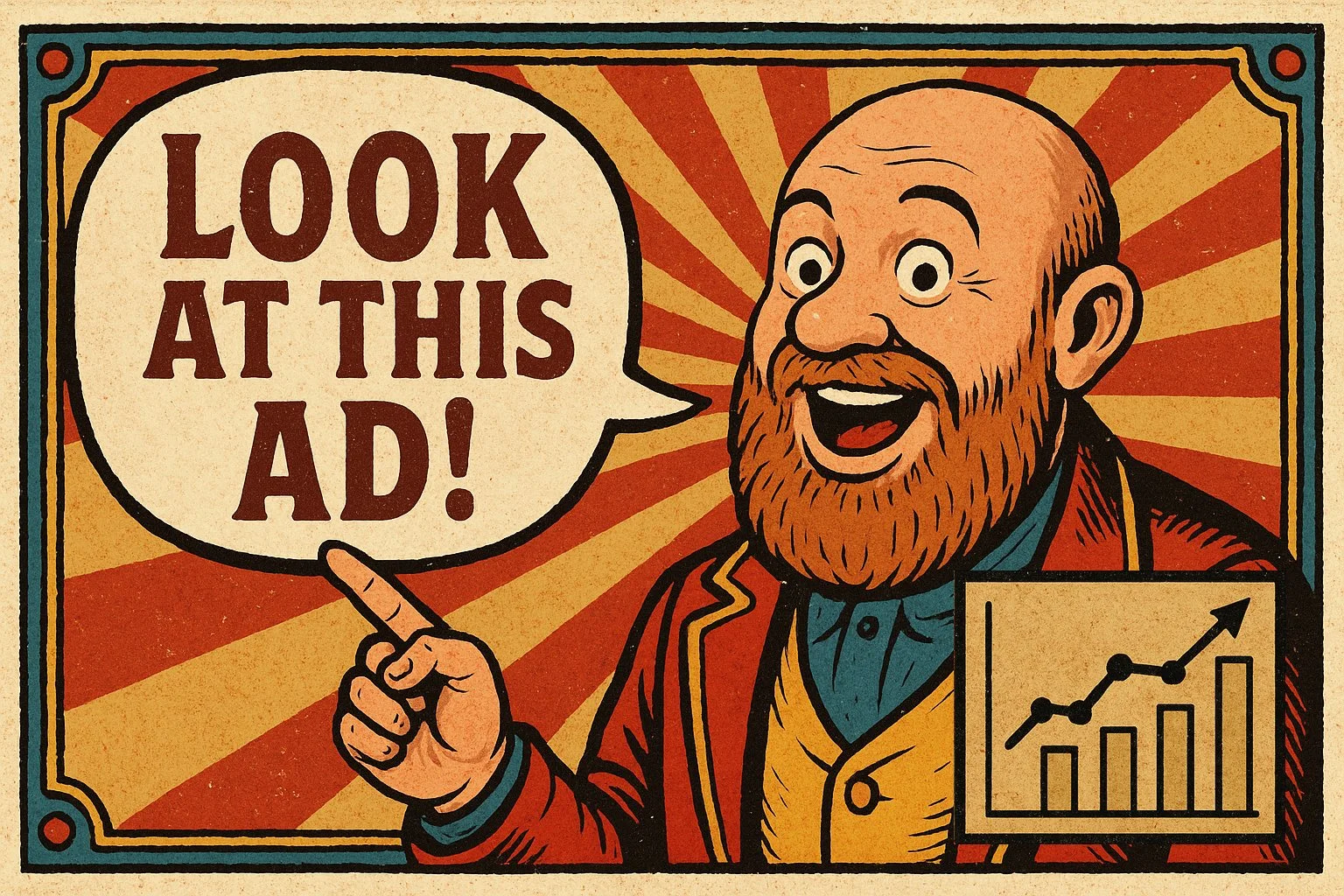Creative + Data = Growth: Designing Paid Ads That Attract First-Time Buyers
Why It Matters
Creative + Data = Growth: Pairing design clarity with signal-based optimization drives acquisition
Awareness ads need to educate and hook, not just discount
Use a structured creative framework (Hook → Promise → Proof → CTA → Reinforcement)
Let performance data guide your creative refreshes and scale decisions
Track CAC and incremental lift for first-time buyers, not blended ROAS
When brands hit a growth plateau, it’s usually not because they’re running out of customers—it’s because they’re talking to their existing pool of customers.
Retention campaigns are easy to measure and comfortable to run. But acquisition creative designed for first-time buyers is where growth happens. And that requires a different design playbook—one that blends creative storytelling with data precision.
Why Creative + Data Is the New Growth Engine
Creative earns attention—data earns truth
Don’t get me wrong—I love an aesthetically pleasing asset like the rest of us graphic designers. But even the most thumb-stopping video or carousel means nothing if it doesn’t lead to a measurable behavior.
Creative brings emotion.
Data brings validation.
When they work together, you build a feedback loop that accelerates learning and efficiency.
Acquisition ≠ Retention
First-time buyers don’t know your story...yet. Your job:
Clarify what you do in 3 seconds or less
Differentiate why you’re worth trying
Mitigate risk of the purchase through social proof and easy offers
Retention ads can rely on brand equity—acquisition ads must create it.
The Ad Design Framework for Awareness & Acquisition
Keep in mind that these recommendations focus on video asset creation. Static images are an entirely different beast.
| Layer | Role | Creative Approach | Metrics to Track |
|---|---|---|---|
| 1. Hook / Stop-Scroll | Capture attention in 1–2 seconds | Movement, curiosity, emotion, contrast | Video hook, video hold, watch % |
| 2. Promise / Value Proposition | Show what’s in it for them | Clear copy, strong headline, visual storytelling | CTR, outbound clicks |
| 3. Social Proof / Trust | Reduce perceived risk | Review overlays, testimonial quotes, “as seen in” | Engagement rate, post saves, post shares |
| 4. Offer + CTA | Drive the first conversion step | Simple, visible button or banner | Clicks, add-to-carts, lead forms |
| 5. Reinforcement (Optional) | Reassure indecisive viewers | Guarantees, scarcity, motion elements | Dwell time, repeat visits |
Data-Backed Creative Playbook
Hypothesize, then Design
Start with your selected hook and then ask, “What do I believe will resonate visually and why do I think it will work?” and design 2–3 creative variants that test that hypothesis (different visual angles, tones, etc). Create a storyboard to make sure you are hitting your hook, promises/problems solved, trust, and CTA.
Test Narrow, Learn Fast
Use small budgets to gather directional data. If a creative isn’t winning in video hook and hold, or even early engagement, pause it fast after 8k impressions—don’t wait for full funnel conversion.
Read the Signals, Not Just the Spend
Early metrics (engagement, CTR, dwell time) often predict downstream performance. Use those as your north stars.
Mix Quant & Qual
Watch comments, reactions, and qualitative signals alongside CTRs and ROAS. Good creative drives conversation as much as clicks.
Scale, Then Refresh
Once a concept hits, replicate the framework—not the exact ad. Especially now—Meta is grouping similar ads together in style so you need to have enough visual diversity. Swap visuals, update CTAs, test new testimonials to prevent fatigue.
Visual Design Principles for First-Time Buyer Ads
Simplicity wins. Too many layers, overlays, or text blur the promise.
Faces drive empathy. People relate to people.
Contrast stops thumbs. Use color, whitespace, or motion strategically.
Typography should clarify, not decorate. Less is more—be concise.
Brand consistency builds trust (logos, color palettes, fonts).
“If your ad could only show one frame and one sentence—would someone still get it?” That’s the creative stress test we use at 3.Ohhh.
Common Mistakes
Designing for retention instead of acquisition
Over-testing offers, under-testing storytelling
Letting bad creative run on “gut feel” instead of signal
Ignoring mobile-first readability
Ignoring platform-first creative tactics
Confusing engagement (likes) for interest (clicks)
Metrics That Actually Matter
New Buyer CAC: cost per first-time purchaser
Lift vs Baseline: did the creative drive incremental buyers
Creative Fatigue Rate: when CTR or VTR drop >25%, it’s time to refresh
View-Through Conversions: for awareness stage validation
First-Purchase ROAS: clean view of acquisition ROI
Creative fuels emotion. Data fuels iteration. Together, they form the system that scales first-time buyer growth.
If your creative process still looks like “one idea, one test, one hope,” it’s time to evolve. Start designing ads that attract, convert, and teach you something every time.

